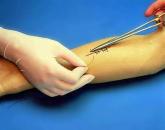Twists in a nose and watery eyes. If your eyes get cold when you have a cold: treat an unpleasant symptom
The development of colds causes such unpleasant symptoms as runny nose, headaches, rawness in the throat, tearing, etc. Their appearance is due to inflammation of the nasopharyngeal mucosa and sinuses. What should I do if my eyes get watery during a runny nose? First of all, you need to establish the root cause, which provoked tearing and rhinitis. As a rule, inflammation in the nasal cavity leads to edema of the nasolacrimal canal, as a result of which the outflow of fluid from the lacrimal sac is disturbed. That is why many people with colds are worried not only by a runny nose, but also by profuse tearing. In addition, the eyes may water and due to the development of allergic or infectious conjunctivitis, which often accompanies ARVI.
Causes of rhinitis and tearing
What if there is a runny nose, watery eyes and sneezing? The principles of treatment are determined entirely by the cause of the development of pathological processes. Most often, rhinitis occurs when the nasal mucosa is damaged by pathogenic viruses, in particular adenoviruses and rhinoviruses. Due to the rapid spread of infection and swelling of soft tissues, there is an increased production (production) of tear fluid.
In addition, tearfulness and accompany not only the common cold, but also such diseases as:
- sinusitis;
- allergic rhinitis;
- conjunctivitis (infectious, allergic);
- allergic rhinoconjunctivitis (pollinosis).
With the formation of foci of inflammation in paranasal sinuses and directly in the nasal cavity mucous membranes swell strongly. That is why there is a narrowing of the inner lumen of the lacrimal canals and, as a result, tearing. Hypothermia, lack of vitamins in the body, iron deficiency anemia, inappropriate use of hormonal drugs, as well as unbalanced nutrition can provoke the development of infection in the respiratory organs.
Drug treatment for colds
The common cold is one of the most common causes of sneezing and a bad cold. Late arrest of inflammatory reactions is fraught with damage to the nasolacrimal canal and, as a consequence, tearing. ARVI, which includes the common cold, are treated with antiviral agents. With their help, you can quickly eliminate lesions in the nasal cavity and undesirable manifestations of the disease within a few days.
The common cold can cause the development of ethmoiditis, sinusitis, pneumonia, and even pyelonephritis.
According to statistics, about 45% of patients suffer a cold "on their feet", as a result of which they often have complications. Viral infection progresses rapidly and eventually penetrates into the paranasal sinuses, causing more serious diseases. Therefore, when the first signs of ARVI, which include chills, fever and rhinitis, the following types of drugs should be used: 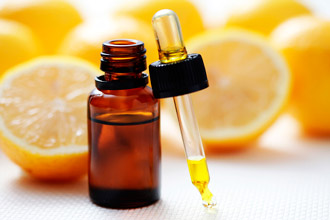
- "Amiksin" - destroys the majority of virions, provoking the development of influenza, ARVI and uretogenital infections;
- “Kagocel” suppresses the activity of pathogenic viruses, in particular herpes viruses, as a result of which the severity of inflammation in the nasal cavity decreases;
- "Groprinosin" - stimulates the activity of defense cells, increases specific immunity and contributes to the destruction of rhinovirus infections;
- "Tamiflu" - prevents the synthesis of viral RNA, as a result, the number of virions in the foci of inflammation significantly decreases;
- "Arbidol" - stimulates the activity of T-lymphocytes, increases local immunity and prevents the development of most viruses that provoke SARS.
Correct treatment can only be made by the attending physician after examining the patient. If the patient's condition does not improve within 2-3 days, the specialist changes the tactics of treatment and replaces the previously prescribed drugs with more effective ones.
Drugs from the common cold
What to do if a runny nose does not pass for a long time? To relieve nasal breathing, many patients use vasoconstrictor drops. But it is necessary to take into account the fact that they give only temporary relief of symptoms. The composition of drugs does not include components that destroy infectious agents. That is why it can bother 7 or more days.
How to treat rhinitis? First of all, it is desirable to determine the cause of its occurrence. A runny nose can be infectious, allergic, vasomotor, or chronic. Depending on the etiology of the disease, the following types of nasal agents can be used to relieve nasal breathing and eliminate inflammation in the mucous membrane:
- moisturizing ("Marimer", "Salin") - clear the nasal canals from mucous accumulations and help moisturize the ciliated epithelium;
- vasoconstrictor ("Tizin", "Galazolin") - contribute to the narrowing blood vessels and reduce the swelling of the nasal passages;
- antiallergic ("Orinol", "Rinofluimucil") - reduce the sensitivity of histamine receptors, thereby reducing the severity of allergic manifestations in the nasal mucosa;
- antimicrobial (“Bactroban”, “Framacetin”) - destroy the cells of microbes and accelerate the regression of inflammation in the nasal canals;
- hormonal ("Bekonaze", "Fliksonaze") - reduce swelling and inflammation in the nasal mucosa;
- antivirals (“Kipferon”, “Gripperon”) - stimulate the synthesis of interferon, which inhibits the activity of the viral flora.
If a runny nose does not go away within 14 days, and fever and headaches join the symptoms of the disease, this may indicate the development of bacterial sinusitis.
To speed up the healing process, it is advisable to use drugs for washing the nasopharynx. Physiomer, Aqualor and Aqua Maris have a pronounced anti-edematous and wound-healing effect. As a rule, when normal nasal passages and the nasolacrimal duct are restored, the eyes cease to water and the rhinitis completely disappears.
Folk remedies for rhinitis
A runny nose - one of the most unpleasant manifestations of ARVI, which leads to a significant deterioration of health. Irritation of the skin near the nasal openings, lacrimation and sneezing is a consequence of inflammation of the mucous membrane in the nasal cavity. Eliminate pathological symptoms and alleviate the condition by using traditional remedies.
Traditional medicine offers some simple, but effective meanshelping to eliminate severe runny nose:
- oil of thuja: put 2 kali of warmed oil into each nasal passage 3-4 times a day;
- beet juice: bury 3 drops of fresh juice in the nose at least 3 times a day;
- lemon juice: dilute lemon juice with water in a ratio of 1: 1; bury 2 drops of the solution in the nose 3-4 times a day.
To reduce irritation in the nose, you can lubricate the nasal openings with menthol oil. It has an anti-inflammatory and sedative effect, therefore it helps to prevent excessive accumulation of mucus in the nasopharynx.
Conjunctivitis medications
One watery eye is a clear sign of unilateral conjunctivitis. Viruses, allergens or bacteria can provoke inflammation of the lacrimal sac. If the tearing is accompanied by severe itching, burning and redness of the eyes, most likely, you are faced with allergic conjunctivitis. In those cases when pus accumulates in the corners of the eyes, a bacterial form of the disease is diagnosed.
What to do with conjunctivitis? The principles of treatment are determined by the nature of the pathogen. Viral forms of conjunctivitis are treated with antivirals. eye drops, bacterial - antibiotics, and allergic - antihistamine drugs:
As a rule, timely treatment of conjunctivitis can eliminate tearing in 2-3 days.
However, irrational use of drugs and poor hygiene can cause very serious complications - loss of vision, abscess of the lacrimal sac, keratitis, etc.
Nature has awarded man a unique machine - a healthy body. But, as in any mechanism, failures occur in it. The situation is aggravated by the presence of several phenomena at the same time, since their effect is confusing and difficult to diagnose. One of these factors is the condition when the eyes and runny nose are watery.
Runny nose as a manifestation of rhinitis
Rhinitis is a process in which the mucous membranes of the nose become inflamed. The disease is accompanied by the release of sulfur or pus from the nose, the breathing of a sick person is difficult, and the function of smell is reduced. Often the symptom is accompanied by sneezing. The main factors causing rhinitis include the following factors.
- Viruses and bacteria;
- allergic reactions;
- mucosal changes;
- polyps in the nose;
- vasomotor type disorders.
Causes of tearing
This symptom is characteristic of a situation when there is an excess outflow of fluid, which is required to provide food and eliminate foreign substances (streams, dust, mud particles). Removal of fluid from the eye through the nasal duct. Teariness occurs for a number of reasons.
- Increased production of tears caused by stress, pain, inflammation and pathologies.
- Violations in terms of outflow of mucous fluid - the formation of edema of the mucous membrane, closed exit passage of tears, narrowing of the channel.
Symptoms are characteristic of several diseases, they will be discussed further.
Simultaneous occurrence of symptoms
Runny nose and tears can appear together only if there are two pathological phenomena: an allergic reaction of the body and a viral-bacterial infection. In the first situation, inflammation occurs due to the production of histamine in the body (this is the response factor for the penetration of allergens). In the second case, the joint manifestation of symptoms is dangerous for the environment, since pathogenic microorganisms are released from the nose.
Diseases
If a child has watery eyes, and a runny nose begins to manifest itself more and more actively, as well as in the case of the discovery of similar symptoms in an adult, this indicates certain diseases.
- Allergic rhinitis;
- conjunctivitis;
- ARVI;
- Sinusitis;
- Other phenomena.
Therefore, if there is an unbearable runny nose, and watery eyes, you should consult a doctor who can make the correct diagnosis and prescribe a competent therapy.
Allergic rhinitis and tearing
This phenomenon usually occurs in children and adults in the spring and autumn period. Usually, a reaction occurs to external stimuli — pollen from flowers, animal dander, certain types of food, or odors. The temperature does not appear in this case, but patients often suffer from sneezing, which has the character of an attack. From the nasal passages mucus flows, which does not have color, the nasal congestion, although it allows you to breathe easily, but prevents the usual rhythm of life. There are swelling of the face, redness in the eye area.
Conjunctivitis
If one eye has started watering, there is no increase in temperature, which indicates the development of conjunctivitis. A runny nose, which is manifested in the disease, has a bacterial etiology. The infection can pass to the mucous membranes located nearby. Treatment of the disease depends on the manifestation and nature of the pathology. It is intended to ensure an integrated approach. To avoid itching and complications, each watery eye should be instilled with a separate pipette.
ARVI
The main reason for showing tearfulness of eyes and runny nose is the common cold. She is subject to children and adults alike. The process begins with a runny nose, which later is joined by lacrimation, sneezing. This is followed by fever, pain in the head and throat. In the early days of the disease, the symptoms are extremely acute and entail discomfort for patients. Treatment of a cold process involves the execution of actions.
- Compliance with bed rest;
- the use of large amounts of fluid;
- regular gargling with broths and medicines;
- carrying out inhalations;
- vitamin complex therapy;
- airing the room;
- performing wet cleaning in the room where the patient is.
The drugs that provide treatment for the disease are determined by the doctor. It may be antibiotics, anti-rhinitis and congestion, drops in the nose and eyes. Any treatment should be carried out efficiently and promptly, so as not to have complications.
Medical events
Preparations
If the baby has a runny nose, as well as a child, teenager, or adult, while tearing begins, measures should be taken.
- Application vasoconstrictor drugs help eliminate edema and facilitate respiratory function. For kids, special drops are chosen - NAZEL-BEBI, VIBROCIL. Apply within a week.
- Antibiotics are prescribed in a situation where bacterial and viral phenomena are attached to the main infectious process. They are appointed by the doctor, the treatment lasts for the course.
- If the disease is accompanied fever, sneezing or coughing present, anti-inflammatory and antipyretic drugs may be prescribed. These are Paracetamol, Ibuprofen and others.
- Antihistamines have proven themselves well if an allergic component joins the disease. ZODAK is most successfully used.
How to treat, and how long it will take, can only be determined by the attending physician - a competent specialist. Independent adoption of measures not only does not lead to proper results, but also causes certain complications.
Folk remedies
Non-traditional medicine is an excellent prevention of the development of the disease and its transition to a heightened form, so the first thing to do is to pay attention to folk remedies.
- A decoction of chamomile color for washing eyes will get rid of tearing, if the eyes are watery. Its adoption inside will allow to overcome sneezing and runny nose. You will need a tablespoon of flowers and 250 ml of water.
- The calendula decoction has good antibacterial properties. You need to take 1 spoon of color and pour a glass of boiling water. Infusing for 15 minutes and filtering, can be used for rinsing eyes and nose.
- If you have been worried about a runny nose for a long time, you can use millet decoction for lotions - for heating the “nasal wings”. Even if the concentration is exceeded, it will not worsen, but improve the effect.
- Dill water will help to overcome tearing. To prepare, you need to take a spoonful of dill seeds and pour boiling water. Insisting a few hours, you can rinse eyes.
The use of these tools ensures quick relief from symptoms and negative manifestations. If there is a strong runny nose, and constantly watery eyes, it is necessary to direct efforts to identify the cause, and then proceed to treatment. Deal with all the questions will help competent doctor.
The spring and autumn periods are especially rich in so-called “cold” diseases. These seasons with their significant temperature drops, a series of cooling and warming create stress for the body and adversely affect the immune system. The body actively fights against negative weather factors, but often when it comes into contact with people suffering from respiratory diseasessurrenders and eventually becomes infected.
This is explained by the fact that the strain of viruses or bacteria that enter the body is particularly invasive (the ability to overcome all defenses) and pathogenicity (the ability to infect healthy cells and release toxic substances).
As a result, even a completely healthy person suffers from colds 1-2 times a year, most often suffering a runny nose in mild form. This, to a certain extent, helps the immune system to enrich itself with new antibodies, which, when confronted with the same kind of microflora, will give the pathogenic agents a fitting rebuff. In the winter, frosty, period without thaw, the incidence of respiratory infections is sharply reduced. Low temperatures kill harmful microflora and temper the body.
Are rhinitis, sneezing and tearing always a sign of a cold?
A runny nose that occurs most often is a symptom of a disease called acute respiratory infection or acute respiratory viral disease. The name “infection” implies infection with a mixed infection, that is, a mixed bacterial and viral infection. But a runny nose may also be of allergic origin, caused by the body's response to certain external non-infectious agents or resulting from uncontrolled medication.
Also widely known is rhinitis of neurogenic origin, which occurs in stressful situations. Rhinitis with copious purulent secretions and in combination with other specific symptoms may indicate the onset of sinusitis.
Sneezing, as a protective reaction of the organism, develops under the action of any irritating factors on the nasal mucosa. They do not have to be bacteria or viruses. Inhalation of dust at home or outdoors, sharp odors can also cause a reflex exhale. With the exhaust air, all unnecessary elements are thrown out of the upper respiratory tractthat have not yet had time to penetrate deep into the mucous membrane.
In these cases, sneezing can be considered as a warning that acute respiratory infection is possible. Cases when sneezing begins with a sudden transition from darkness to bright light are also described.
Such a symptom as tearing and redness of the eyes, is observed with strong emotional shocks and various diseases. It may be allergies, constriction of the tear ducts, conjunctival infections, respiratory viral diseasessinusitis. The eyes also water with mechanical or chemical damages, eyelid deformities, dacryocystitis (inflammation of the lacrimal sac), simply with extreme fatigue.
Under what conditions do these symptoms combine?
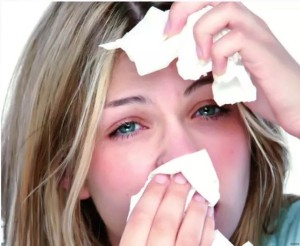 According to one symptom, be it sneezing or a runny nose, it is impossible to determine the diagnosis. It is necessary to take into account other factors: the nature of a person’s complaints, anamnesis (how the disease develops), the presence of other pathological signs, the general condition of the body. No need to make independent conclusions.
According to one symptom, be it sneezing or a runny nose, it is impossible to determine the diagnosis. It is necessary to take into account other factors: the nature of a person’s complaints, anamnesis (how the disease develops), the presence of other pathological signs, the general condition of the body. No need to make independent conclusions.
It is recommended to turn to the specialists, since the sinus may be hidden behind the common cold, which, if not treated promptly, may turn into a chronic form or lead to dangerous complications. Other types of rhinitis of non-infectious origin should be started immediately. Only the ENT doctor will be able to competently make an accurate diagnosis and begin a competent treatment!
When your eyes are watering, you can not delay the examination by an ophthalmologist. Eye pathologies are very numerous, some of them require surgery or urgent drug treatment.
There are diseases in which, along with sneezing and runny nose, watery eyes and possible formation of purulent exudate. This is a large group of acute respiratory viral infections. One of them - adenovirus, affects mainly preschool children and is caused by an extensive group of adenoviruses, consisting of 32 species, each of which has a high pathogenicity.
Infection occurs from a sick person by airborne droplets. The disease begins acutely: symptoms of intoxication appear (fever, severe weakness, loss of appetite), catarrhal symptoms develop, and watery eyes.
This is the main symptom of adenovirus infection, since the pathogen has tropism (compatibility) with respect to the epithelium of the conjunctiva and other ocular tissues, causing conjunctivitis and keratoconjunctivitis. The eyes are watery, red, the eyelids are swollen, the cornea is covered with a net of dilated capillaries.

Abundant tears first have a serous character, but with quick attachment bacterial infection become purulent. Purulent membranous keratoconjunctivitis develops as a manifestation of adenoviral disease.
Sneezing is characteristic of adenovirus infection only at the very beginning of a virus attack, when the body and nasal mucosa are still trying to resist. Then a runny nose begins, starting with mucous-serous secretions, turning into mucopurulent mucus. Adenovirus can affect the mucous membrane, not only the upper respiratory tract.
Antritis, laryngitis, rarely bronchitis, inflammation are diagnosed. lymph nodes and intestinal mucosa. The main danger of adenovirus infection is the defeat of the pulmonary alveoli virus, the development of pneumonia.
Therefore, it is not necessary to take independent steps in terms of treatment. When a child begins to have watery eyes, especially with a purulent discharge, the temperature rises, there is a strong indisposition, and frequent sneezing turns into a runny nose, you need to contact a pediatrician, and in severe cases call an ambulance. This will save the patient from appearing. dangerous complications and keep you healthy.
Nature has developed protective mechanisms to remove harmful and irritating substances falling into nasal cavity. Therefore, when a runny nose, sneezing, watery eyes, the body tries to get rid of damaging factors.
All three actions are interrelated and often combined. But sometimes there are isolated manifestations or only two components.
Sneezing
This unconditioned reflex is inherent in us from birth and performs a protective function. The process takes a second, but several organs are involved, and complex interaction takes place at the level of the nervous regulation for the coordinated activity of all systems.
Irritation in the area of the nose (tickling sensation) causes a deep breath and subsequent exhalation with contraction of the intercostal muscles and diaphragm. Soft palate, front throat and back of the tongue isolate oral cavity. All the air under great pressure exits through the nasopharynx into the nasal cavity, removing irritant, mucus, and foreign substances.
Sneezing factors:
- bacteria or viruses
- allergens,
- change of air temperature
- sharp odors
- polyps in the nose,
- bright sunlight.
Runny nose
Rhinitis is an inflammation of the nasal mucosa. It manifests itself in the form of discharge from the nasal passages (serous or purulent), difficulty breathing, decrease in smell, sneezing.
Causes of rhinitis:
- bacteria or viruses
- allergic agents
- vasomotor disorders (impaired vascular tone in the nasal passages),
- atrophic mucosal changes,
- polyps.
Tearing
This symptom occurs when excessive formation or violation of the outflow of tear fluid. It is necessary for nourishing the cornea, cleansing the eye from foreign objects (dust, streaks), protection against bacteria and viruses. The fluid is removed from the eye through the nasal channel.
Causes of tearing:
- Strengthening the production of tear fluid:
- stress or painful stimuli;
- irritants (dust, bacteria, allergens);
- inflammatory diseases of the eye (conjunctivitis);
- pathology of the lacrimal glands.
- Violation of the outflow of tear fluid:
- swelling of the nasal mucosa and closure of the exit nasolacrimal passage,
- narrowing nasolacrimal canal.
When all the symptoms occur simultaneously
Considering all the factors, runny nose, tears and sneezing occur together in two pathological conditions: allergies and viral or bacterial infections.
In the first case, inflammatory changes result from the production of histamine in response to the penetration of allergens. The reaction develops very quickly, within a few seconds or minutes. Sneezing and tearing cause great trouble and discomfort for a sick person. But to other people, such manifestations do not cause any harm, since an allergic person is not contagious.
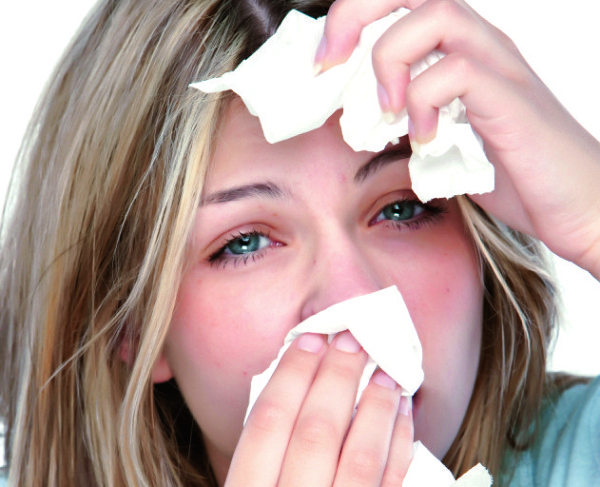
With the development of an infectious process, a runny nose and sneezing carry a threat to others, since pathogenic microorganisms are secreted from the nose. They are distributed with the ejected air over a distance of two to three meters.
At a cold, a serous fluid is released from the nasal passages, from which pathogenic factors are removed. They provoke sneezing, irritating nerve endings. A swelling of the mucous membrane violates the outflow from the nasolacrimal canal and causes lacrimation.
How to distinguish the infectious process from allergies
When your eyes water and your eyes are worried for 1–2 days, you need to consult a doctor to clarify the cause and prescription of treatment. Independently, it is difficult to tell the difference between an infection and an allergy.
Signs of allergic pathology:
- Spring-summer period (pollinosis), but there may be year-round manifestations with allergies to dust, wool, perfumery.
- Burning and swelling of the eyelids, pronounced lacrimation.
- Deterioration of health when going out (contact with the allergen).
- Mild symptoms of intoxication (weakness, malaise).
- Good effect when using antihistamine drugs.
Signs of an infectious process:
- autumn-winter period;
- contact with a sick person;
- cough;
- deterioration of health in the morning and evening hours;
- severe symptoms of intoxication (fever, headache, severe weakness, body aches).
Treatment
With uncomplicated course of a cold passes for 5-7 days. Improper treatment of allergic manifestations may delay the healing process.
Therapy of these pathologies combines the use of vasoconstrictor drugs to reduce edema and restore nasal passability. And the second method is washing the nasal cavity to remove viruses, bacteria, allergens.
For the treatment of viral infection using drugs that stimulate the production of interferon, antipyretics. With the development of a bacterial infection, antibiotics are used. Given the wide variety of viruses, specific antiviral therapy has not been developed.
For the treatment of allergic manifestations prescribe antihistamines, in case of serious condition - a course of hormone therapy. During remission, allergy tests are performed to identify the agent. According to indications, immunospecific therapy is prescribed to reduce body sensitization. This will reduce or prevent allergic reactions afterwards.
Treatment of rhinitis, sneezing and tearing depends on the underlying cause of the disease, and therapy is carried out strictly on the recommendation of the attending physician.
Any pronounced change in the child's well-being should be a reason to identify the causes of health problems. In children of the first years of life, a runny nose accompanied by lacrimation becomes one of the most frequent occurrences. A similar condition can occur at the most for various reasons, in accordance with which the treatment is chosen.
Causes of rhinitis accompanied by tearing
A runny nose occurs as a result of contact with the mucous membrane of the nasal passages of viruses or bacteria. As a result of reproduction of these microorganisms, inflammation begins, the mucous membrane becomes edematous, and a large amount of mucus is produced. Puffiness in the nasal passages leads to the fact that the lacrimal canal located in them narrows and the lacrimal fluid accumulates in the eyes.
With a common cold, this phenomenon is usually inconspicuous and does not cause pronounced discomfort. But if a child complains that his eyes are very watery, and snot is flowing from the nose in a stream, then we can assume several reasons for this condition. These include:
- Sinusitis, that is, inflammation of the sinuses. In preschool children, most often the infection spreads to the ethmoid sinuses and frontal sinusesaccordingly, ethmoiditis and frontal disease develop.
- Acute respiratory viral infection or flu.
- Allergic rhinitis.
- Conjunctivitis.
Each of these diseases requires adherence to the scheme of appropriate treatment, and the choice of drugs for the common cold depends on the age of the child.
Sinusitis
Sinusitis in children in most cases is a complication of undertreated rhinitis. The infection passes from the mucous membranes of the nasal passages to the sinuses. Microbes that have entered the cavity of the sinuses begin to multiply vigorously, an inflammatory reaction and puffiness occur. In the inflamed sinuses of the nose accumulates fluid, the outflow of which is difficult due to the fact that the swollen mucous membrane clogs the exit to the nasal cavity.
The lack of exudate efflux leads to the creation of the most favorable conditions for the rapid reproduction of bacteria, as a result of which the serous secret becomes purulent. Any sinusitis is very difficult and in the absence of timely treatment leads to enough severe complications. Suspected inflammation of the sinuses in the child can be on the following grounds:
- Protracted rhinitis. With a common cold, a runny nose does not last more than 10 days. With sinusitis, snot can be disturbing for weeks. Moreover, a bad outflow leads to obstruction of nasal discharge, sometimes even strong blowing does not help to completely alleviate the condition.
- The appearance of a headache. Sinusitis is accompanied by pain in the forehead, on the side of the nose, under the eyes. If one sinus is affected, then the pain syndrome is unilateral.
- Nasal congestion. Breathing through the nose is very difficult, there is a heaviness and spreading in the sinus area.
- When sinusitis periodically tears and eyes, as the swelling of the mucous layer does not allow the tear duct to function normally.
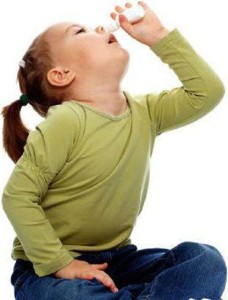
Often, when children have sinusitis, they develop a cough, which is explained by the runoff of snot from the sinuses along back wall pharynx and its irritation. Usually, this symptom occurs when lying down, that is, in a dream.
Long runny nose and difficulty breathing create prerequisites for insufficient oxygen supply to different parts of the brain.
Such a change has a negative effect on the general well-being of the child. Parents may notice deterioration in school performance, inattention, poor sleep, lack of appetite, and occasional wheezing at night. Of the outward signs of pale skin, blue under the eyes, in young children, a runny nose with sinusitis leads to the fact that they constantly keep their mouths open.
Treatment of sinusitis in children must be carried out under the guidance of an experienced doctor and as soon as possible. Self medication or choice only folk methods often leads to the fact that the infection dies out, but not completely eliminated in the sinuses. And this means only one thing - under the influence of the most insignificant provoking factor, sinusitis will again manifest itself with all its unpleasant symptoms.
Principles of sinusitis treatment
The main goal of drug treatment of sinusitis is to improve the outflow from the sinuses, eliminate pathogens and arrest the inflammatory response. In order to achieve rapid positive changes in the child's well-being, ENT doctors usually use the following groups of drugs:
- Nose drops with vasoconstrictor effect. The use of these drops can reduce the production of mucus. This leads to the elimination of puffiness, and snot more easily out of the sinuses when blowing out. When using vasoconstrictor drugs, the child has less watery eyes, but it must be borne in mind that such drugs are not used for more than five days provided they are instilled no more than 4 times a day. nose becomes possible only after instillation of such funds. In pediatric practice, Nazivin and Sanorin are used more often, but it is better to entrust the choice of a safe means for children with sinusitis to a doctor.
- Antimicrobial treatment is prescribed to eliminate pathogenic bacteria in the sinuses. Local treatment can be selected, i.e. using sprays or drops, or systemic treatment antibacterial drugs. Antibiotics must be prescribed if the cold is accompanied by fever, general symptoms of intoxication.
- Antihistamines are often used in the treatment of children with sinusitis. Their use helps to quickly eliminate edema, which facilitates breathing and general well-being.
Besides drug therapy additional methods can be applied. Good for enhancing the outflow of thick secretion from the nose helps inhalation, you can do it over the decoction of herbs, essential oils with antiseptic effect.
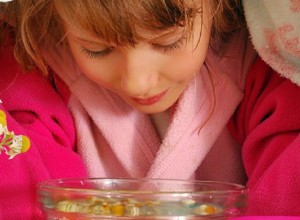 After inhalation not only breathing is easier, but also less watery eyes. A sick child needs to give more to drink, this will speed up the removal of toxins from the body. In case of acute illness in the first days of the disease, bed rest should always be observed, this will reduce the risk of severe complications.
After inhalation not only breathing is easier, but also less watery eyes. A sick child needs to give more to drink, this will speed up the removal of toxins from the body. In case of acute illness in the first days of the disease, bed rest should always be observed, this will reduce the risk of severe complications.
The lack of effect of conservative therapy is the basis for the appointment of patients with sinus sinus puncture, which provides an outflow of accumulated mucus. After a puncture, sinus lavage and a course of drug treatment are prescribed.
Allergic rhinitis
Allergic rhinitis often occurs in children when exposed to allergens such as house dust, plant pollen. Less commonly, rhinitis may be a manifestation of food allergies or intolerance to certain odors. With allergic rhinitis the child has watery eyes, which is explained by the ingress of the allergen not only on the mucous layer of the nasal passages, but also on the conjunctiva of the eye. Usually tearing occurs immediately after contact with the allergen. Later develop a cold.
Allergic rhinitis may be accompanied by irritability in a child, sneezing, complaints that the eyes and nose are itching. A runny nose with allergies continues until contact with the allergen is interrupted and for several more days, during which all toxins leave the body.
![]()
Treatment allergic rhinitis after examination by an allergist. Of the medications used local and systemic antihistamines in the age dosage. Drops in the eyes are usually picked up in case of severe itching, eyelid swelling and conjunctival redness. If these changes are not present, and only tearing is observed, then it stops after the first doses of antiallergic tablets.
Acute Respiratory Infection
If a virus enters the child’s body, it causes the development of an acute respiratory infection. The virus adversely affects not only the state of the mucous membrane of the nasal passages, but also affects the conjunctiva, sometimes causing severe tearing. Respiratory infection manifested by the following features: 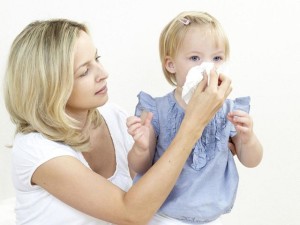
- The appearance of a cold. At first, nasal discharge is light and abundant, breathing is not too difficult.
- The appearance of tearing. Usually watery eyes the first two or three days of illness.
- Coughing in the throat, coughing, sneezing.
- May occur high temperature and symptoms of intoxication, which are expressed by chills, poor appetite, lethargy.
After two or three days the discharge from the nose becomes more dense, at this stage, due to the weakening of the body's defenses, bacterial infection may be added. If bacterial inflammation develops against the background of viral inflammation, then the snot acquires the character of thick, yellowish or greenish in color.
Respiratory viral infection being treated antivirals. In the first days of the disease, the prevention of further virus development is achieved by repeatedly rinsing the nasal passages and throat. Rinsings are carried out by pharmaceutical solutions, decoction of herbs, saline. Depending on the other manifestations of the disease, symptomatic therapy is selected by the doctor.
Establishing the exact cause of a rhinitis accompanied by lacrimation is possible only after an examination and examination by doctors. Parents who do not have a special medical education should always refer to qualified doctors in order to assign proper treatment to their child.
Popular
- What is the name of the Scottish skirt
- What women like a man archer
- Dosage and use of doxycycline when tick bite
- Sinupret - complete instructions
- Number of antennae in arachnid and insect crustaceans
- Help for enterobiasis for the pool, how much is valid
- Ceftriaxone suspension. What is ceftriaxone?
- Third degree breast cancer: prognosis and treatment
- Salt Scrub for the scalp
- Do girls how many centimeters to the uterus




